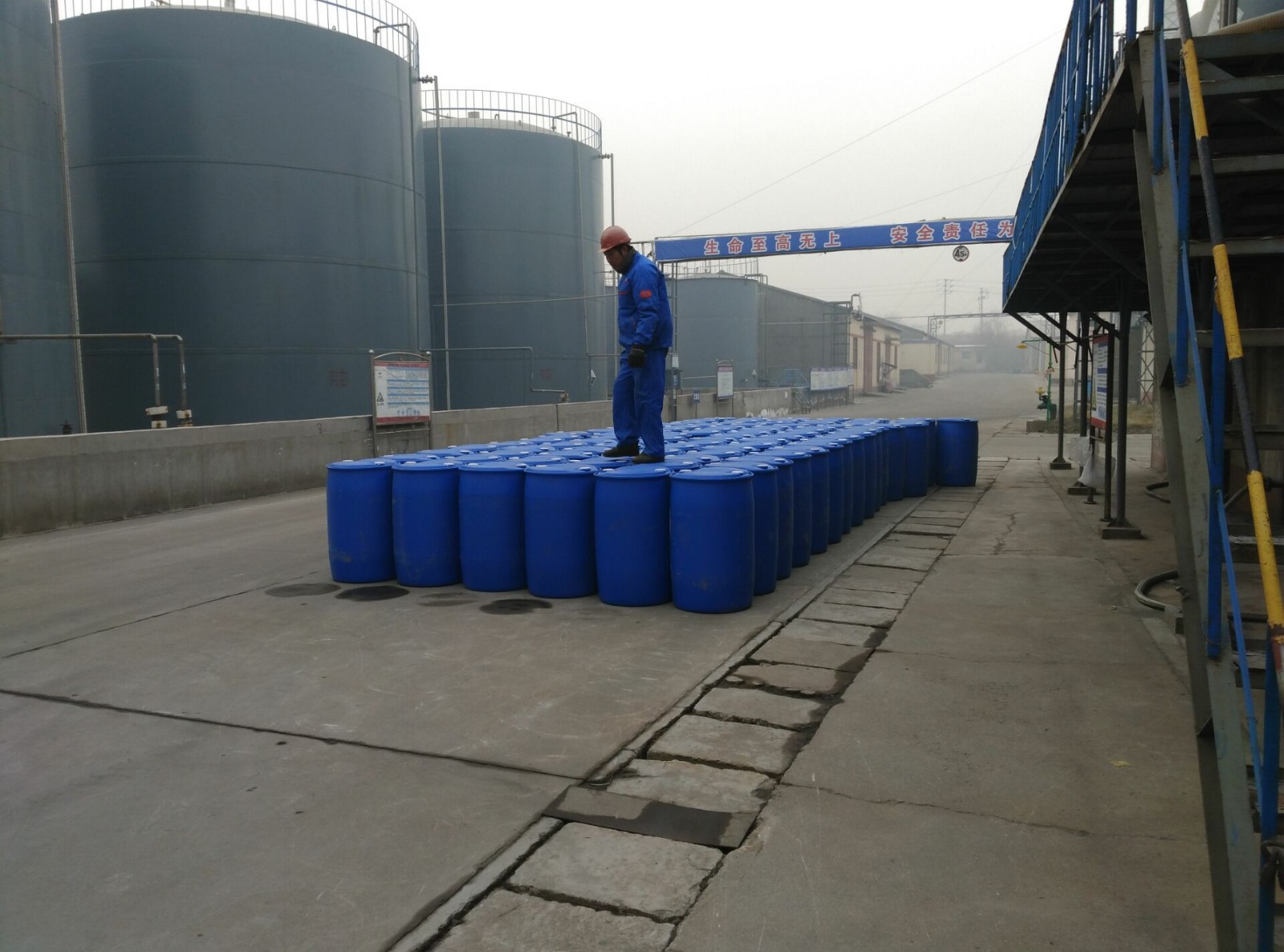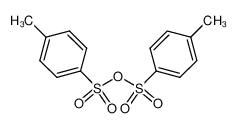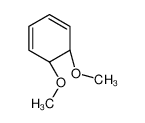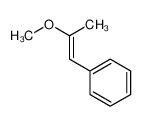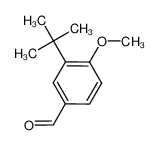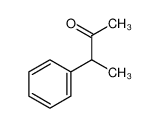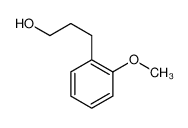| Product name | dimethyl sulfate |
|---|
| Product number | - |
|---|---|
| Other names | Sulfuric acid, dimethyl ester |
| Identified uses | For industry use only. Dimethyl sulfate is used as a methylating agent in the manufacture of many organic chemicals. It is also used in the manufacture of dyes and perfumes, for the separation of mineral oils, and for the analysis of auto fluids. (-) Formerly, dimethyl sulfate was used as a war gas. (-4) |
|---|---|
| Uses advised against | no data available |
| Company | MOLBASE (Shanghai) Biotechnology Co., Ltd. |
|---|---|
| Address | Floor 4 & 5, Building 12, No. 1001 North Qinzhou Road, Xuhui District, Shanghai, China |
| Telephone | +86(21)64956998 |
| Fax | +86(21)54365166 |
| Emergency phone number | +86-400-6021-666 |
|---|---|
| Service hours | Monday to Friday, 9am-5pm (Standard time zone: UTC/GMT +8 hours). |
Acute toxicity - Oral, Category 3
Skin corrosion, Category 1B
Skin sensitization, Category 1
Acute toxicity - Inhalation, Category 2
Germ cell mutagenicity, Category 2
Carcinogenicity, Category 1B
2.2 GHS label elements, including precautionary statements| Pictogram(s) |  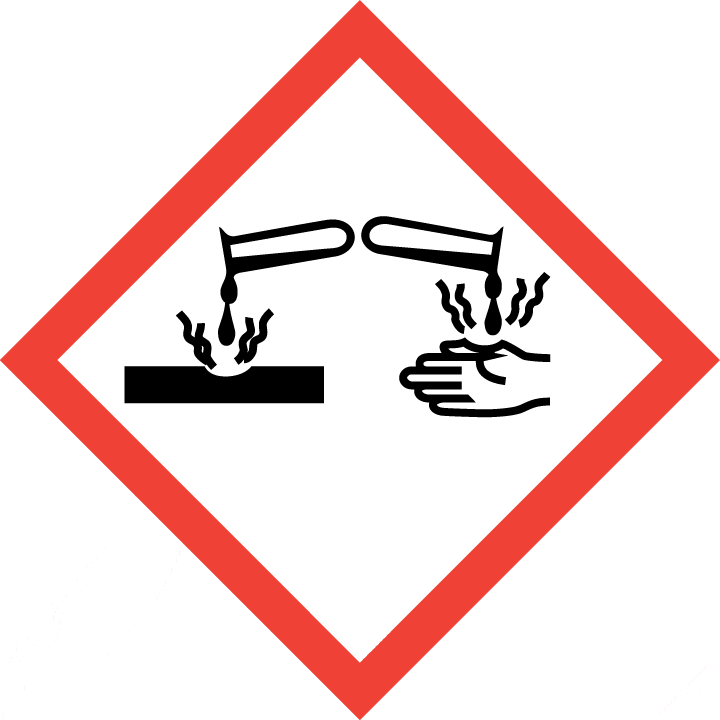  |
|---|---|
| Signal word | Danger |
| Hazard statement(s) | H301 Toxic if swallowed H314 Causes severe skin burns and eye damage H317 May cause an allergic skin reaction H330 Fatal if inhaled H341 Suspected of causing genetic defects H350 May cause cancer |
| Precautionary statement(s) | |
| Prevention | P264 Wash ... thoroughly after handling. P270 Do not eat, drink or smoke when using this product. P260 Do not breathe dust/fume/gas/mist/vapours/spray. P280 Wear protective gloves/protective clothing/eye protection/face protection. P261 Avoid breathing dust/fume/gas/mist/vapours/spray. P272 Contaminated work clothing should not be allowed out of the workplace. P271 Use only outdoors or in a well-ventilated area. P284 [In case of inadequate ventilation] wear respiratory protection. P201 Obtain special instructions before use. P202 Do not handle until all safety precautions have been read and understood. |
| Response | P301+P310 IF SWALLOWED: Immediately call a POISON CENTER/doctor/… P321 Specific treatment (see ... on this label). P330 Rinse mouth. P301+P330+P331 IF SWALLOWED: Rinse mouth. Do NOT induce vomiting. P303+P361+P353 IF ON SKIN (or hair): Take off immediately all contaminated clothing. Rinse skin with water [or shower]. P363 Wash contaminated clothing before reuse. P304+P340 IF INHALED: Remove person to fresh air and keep comfortable for breathing. P310 Immediately call a POISON CENTER/doctor/… P305+P351+P338 IF IN EYES: Rinse cautiously with water for several minutes. Remove contact lenses, if present and easy to do. Continue rinsing. P302+P352 IF ON SKIN: Wash with plenty of water/... P333+P313 If skin irritation or rash occurs: Get medical advice/attention. P362+P364 Take off contaminated clothing and wash it before reuse. P320 Specific treatment is urgent (see ... on this label). P308+P313 IF exposed or concerned: Get medical advice/ attention. |
| Storage | P405 Store locked up. P403+P233 Store in a well-ventilated place. Keep container tightly closed. |
| Disposal | P501 Dispose of contents/container to ... |
none
3.Composition/information on ingredients 3.1 Substances| Chemical name | Common names and synonyms | CAS number | EC number | Concentration |
|---|---|---|---|---|
| dimethyl sulfate | dimethyl sulfate | 77-78-1 | none | 100% |
Consult a physician. Show this safety data sheet to the doctor in attendance.
If inhaledFresh air, rest. Half-upright position. Artificial respiration may be needed. Refer immediately for medical attention.
In case of skin contactRemove contaminated clothes. Rinse skin with plenty of water or shower. Refer immediately for medical attention.
In case of eye contactRinse with plenty of water (remove contact lenses if easily possible). Refer immediately for medical attention.
If swallowedRinse mouth. Give one or two glasses of water to drink. Do NOT induce vomiting. Refer immediately for medical attention.
4.2 Most important symptoms/effects, acute and delayedAcute: extremely toxic vapors and liquid -- a few whiffs or contact on skin could be fatal. Also acutely toxic if ingested. Delayed effects which are ultimately fatal may also occur. Lethal concentrations as low as 97 ppm/10 min have been reported in humans. DNA inhibition and damage to human somatic cells, and sister chromatid exchange in human fibroblast cells were observed. Delayed appearance of symptoms may permit unnoticed exposure to lethal quantities. (EPA, 1998)
4.3 Indication of immediate medical attention and special treatment needed, if necessaryIN ALL CASES CONSULT A DOCTOR! INHALATION: Fresh air, rest. Half-upright position. Artificial respiration may be needed. Refer for medical attention. SKIN: Remove contaminated clothes. Rinse and then wash skin with water and soap. Refer for medical attention. EYES: First rinse with plenty of water for several minutes (remove contact lenses if easily possible), then take to a doctor. INGESTION: Rinse mouth. Give plenty of water to drink. Refer for medical attention immediately.
5.Fire-fighting measures 5.1 Extinguishing media Suitable extinguishing mediaWater, foam, carbon dioxide, dry chemical ... .
5.2 Specific hazards arising from the chemicalMaterial is normally stable even under fire exposure conditions and is not hazardously reactive with water. It is incompatible with strong oxidizers and strong ammonia solutions. (EPA, 1998)
5.3 Special protective actions for fire-fightersWear self-contained breathing apparatus for firefighting if necessary.
6.Accidental release measures 6.1 Personal precautions, protective equipment and emergency proceduresUse personal protective equipment. Avoid dust formation. Avoid breathing vapours, mist or gas. Ensure adequate ventilation. Evacuate personnel to safe areas. Avoid breathing dust. For personal protection see section 8.
6.2 Environmental precautionsEvacuate danger area! Consult an expert! Personal protection: complete protective clothing including self-contained breathing apparatus. Ventilation. Do NOT let this chemical enter the environment. Collect leaking liquid in sealable containers. Absorb remaining liquid in dry sand or inert absorbent. Then store and dispose of according to local regulations.
6.3 Methods and materials for containment and cleaning upSpillage should only be dealt with by trained personnel wearing full protective clothing, a full-face mask, and positive-pressure breathing apparatus. Soda ash or 3% ammonia solution may be applied to liquid spills. Sprays of 3% ammonia solution may be used to "knock down" the vapor over spillages. After complete neutralization, spillages may be washed away... If dimethyl sulfate has entered a watercourse ... or contaminated soil or vegetation, advise the police and public authorities.
7.Handling and storage 7.1 Precautions for safe handlingAvoid contact with skin and eyes. Avoid formation of dust and aerosols. Avoid exposure - obtain special instructions before use.Provide appropriate exhaust ventilation at places where dust is formed. For precautions see section 2.2.
7.2 Conditions for safe storage, including any incompatibilitiesSeparated from food and feedstuffs and incompatible materials. See Chemical Dangers. Cool. Dry. Well closed. Ventilation along the floor. Store in an area without drain or sewer access.PRECAUTIONS FOR "CARCINOGENS": Storage site should be as close as practicable to lab in which carcinogens are to be used, so that only small quantities required for ... expt need to be carried. Carcinogens should be kept in only one section of cupboard, an explosion-proof refrigerator, or freezer (depending on chemicophysical properties ...) that bears appropriate label. An inventory ... should be kept, showing quantity of carcinogen & date it was acquired ... . Facilities for dispensing ... should be contiguous to storage area. /Chemical Carcinogens/
8.Exposure controls/personal protection 8.1 Control parameters Occupational Exposure limit valuesNIOSH considers dimethyl sulfate to be a potential occupational carcinogen.
Recommended Exposure Limit: 10 Hr Time-Weighted Avg: 0.1 ppm (0.5 mg/cu m), skin.
Biological limit valuesno data available
8.2 Appropriate engineering controlsHandle in accordance with good industrial hygiene and safety practice. Wash hands before breaks and at the end of workday.
8.3 Individual protection measures, such as personal protective equipment (PPE) Eye/face protectionSafety glasses with side-shields conforming to EN166. Use equipment for eye protection tested and approved under appropriate government standards such as NIOSH (US) or EN 166(EU).
Skin protectionWear impervious clothing. The type of protective equipment must be selected according to the concentration and amount of the dangerous substance at the specific workplace. Handle with gloves. Gloves must be inspected prior to use. Use proper glove removal technique(without touching glove's outer surface) to avoid skin contact with this product. Dispose of contaminated gloves after use in accordance with applicable laws and good laboratory practices. Wash and dry hands. The selected protective gloves have to satisfy the specifications of EU Directive 89/686/EEC and the standard EN 374 derived from it.
Respiratory protectionWear dust mask when handling large quantities.
Thermal hazardsno data available
9.Physical and chemical properties| Physical state | Clear oily liquid |
|---|---|
| Colour | Colorless oily liquid |
| Odour | Essentially odorless |
| Melting point/ freezing point | 63°C(lit.) |
| Boiling point or initial boiling point and boiling range | 188°C(lit.) |
| Flammability | Class IIIA Combustible Liquid: Fl.P. at or above 60°C and below 93.33°C.Combustible. Gives off irritating or toxic fumes (or gases) in a fire. |
| Lower and upper explosion limit / flammability limit | no data available |
| Flash point | 83°C |
| Auto-ignition temperature | 495°C |
| Decomposition temperature | 188°C |
| pH | no data available |
| Kinematic viscosity | no data available |
| Solubility | 3 % at 17.78°C (NIOSH, 2016) |
| Partition coefficient n-octanol/water (log value) | log Kow = 0.16 (est) |
| Vapour pressure | 0.1 to 0.5 mm Hg at 20°C (EPA, 1998) |
| Density and/or relative density | 1.333g/mLat 25°C(lit.) |
| Relative vapour density | 4.3 (vs air) |
| Particle characteristics | no data available |
no data available
10.2 Chemical stabilityStable at room temperature.
10.3 Possibility of hazardous reactionsMODERATE, WHEN EXPOSED TO HEAT OR FLAME.Pure DIMETHYL SULFATE and concentrated aqueous ammonia react extremely violently with one another, as is the case for tertiary organic bases, [NFPA 491M, 1991]. Dimethyl sulfate ignites in contact with unheated barium chlorite, due to the rapid formation of unstable methyl chlorite. The product of methylating an unnamed material at 110° C was allowed to remain in a reactor for 80 min. before the reactor exploded. This involved a sulfur ester such as dimethyl sulfate, [MCA Case History No. 1786].
10.4 Conditions to avoidno data available
10.5 Incompatible materialsCan react with oxidizing materials.
10.6 Hazardous decomposition productsNote: Decomposes in water to sulfuric acid; corrosive to metals.
11.Toxicological information Acute toxicity- Oral: LD50 Mouse oral 140 mg/kg bw
- Inhalation: LC50 Guinea pig inhalation 167 mg/cu m (32 ppm)/60 min.
- Dermal: no data available
no data available
Serious eye damage/irritationno data available
Respiratory or skin sensitizationno data available
Germ cell mutagenicityno data available
CarcinogenicityEvaluation: There is inadequate evidence for the carcinogenicity in humans of dimethyl sulfate. There is sufficient evidence for the carcinogenicity in experimental animals of dimethyl sulfate. Overall evaluation: Dimethyl sulfate is probably carcinogenic to humans (Group 2A). In making the overall evaluation, the Working Group took into consideration that dimethyl sulfate is a potent genotoxic chemical which can directly alkylate DNA both in vitro and in vivo.
Reproductive toxicityNo information is available on the reproductive or developmental effects of dimethyl sulfate in humans. Dimethyl sulfate has been reported to produce tumors in the offspring of rats exposed intravenously.
STOT-single exposureno data available
STOT-repeated exposureno data available
Aspiration hazardno data available
12.Ecological information 12.1 Toxicity- Toxicity to fish: LC50; Species: Lepomis macrochirus (Bluegill, length 33-75 mm); Conditions: freshwater, static, 23°C, pH 7.6-7.9, hardness 55 mg/L CaCO3; Concentration: 7500 ug/L for 96 hr /99% purity
- Toxicity to daphnia and other aquatic invertebrates: no data available
- Toxicity to algae: no data available
- Toxicity to microorganisms: no data available
no data available
12.3 Bioaccumulative potentialBased upon the hydrolysis of dimethyl sulfate in aqueous environments(1), bioconcentration is not expected to be a primary removal process in aquatic systems(SRC).
12.4 Mobility in soilBased upon the hydrolysis of dimethyl sulfate in aqueous environments(1), adsorption to soil and leaching are not expected to be important processes(SRC).
12.5 Other adverse effectsno data available
13.Disposal considerations 13.1 Disposal methods ProductThe material can be disposed of by removal to a licensed chemical destruction plant or by controlled incineration with flue gas scrubbing. Do not contaminate water, foodstuffs, feed or seed by storage or disposal. Do not discharge to sewer systems.
Contaminated packagingContainers can be triply rinsed (or equivalent) and offered for recycling or reconditioning. Alternatively, the packaging can be punctured to make it unusable for other purposes and then be disposed of in a sanitary landfill. Controlled incineration with flue gas scrubbing is possible for combustible packaging materials.
14.Transport information 14.1 UN Number| ADR/RID: UN1595 | IMDG: UN1595 | IATA: UN1595 |
| ADR/RID: DIMETHYL SULPHATE |
| IMDG: DIMETHYL SULPHATE |
| IATA: DIMETHYL SULPHATE |
| ADR/RID: 6.1 | IMDG: 6.1 | IATA: 6.1 |
| ADR/RID: II | IMDG: II | IATA: II |
| ADR/RID: no | IMDG: no | IATA: no |
no data available
14.7 Transport in bulk according to Annex II of MARPOL 73/78 and the IBC Codeno data available
15.Regulatory information 15.1 Safety, health and environmental regulations specific for the product in question| Chemical name | Common names and synonyms | CAS number | EC number |
|---|---|---|---|
| dimethyl sulfate | dimethyl sulfate | 77-78-1 | none |
| European Inventory of Existing Commercial Chemical Substances (EINECS) | Listed. | ||
| EC Inventory | Listed. | ||
| United States Toxic Substances Control Act (TSCA) Inventory | Listed. | ||
| China Catalog of Hazardous chemicals 2015 | Listed. | ||
| New Zealand Inventory of Chemicals (NZIoC) | Listed. | ||
| Philippines Inventory of Chemicals and Chemical Substances (PICCS) | Listed. | ||
| Vietnam National Chemical Inventory | Listed. | ||
| Chinese Chemical Inventory of Existing Chemical Substances (China IECSC) | Listed. | ||
| Creation Date | Aug 12, 2017 |
|---|---|
| Revision Date | Aug 12, 2017 |
- CAS: Chemical Abstracts Service
- ADR: European Agreement concerning the International Carriage of Dangerous Goods by Road
- RID: Regulation concerning the International Carriage of Dangerous Goods by Rail
- IMDG: International Maritime Dangerous Goods
- IATA: International Air Transportation Association
- TWA: Time Weighted Average
- STEL: Short term exposure limit
- LC50: Lethal Concentration 50%
- LD50: Lethal Dose 50%
- EC50: Effective Concentration 50%
- IPCS - The International Chemical Safety Cards (ICSC), website: http://www.ilo.org/dyn/icsc/showcard.home
- HSDB - Hazardous Substances Data Bank, website: https://toxnet.nlm.nih.gov/newtoxnet/hsdb.htm
- IARC - International Agency for Research on Cancer, website: http://www.iarc.fr/
- eChemPortal - The Global Portal to Information on Chemical Substances by OECD, website: http://www.echemportal.org/echemportal/index?pageID=0&request_locale=en
- CAMEO Chemicals, website: http://cameochemicals.noaa.gov/search/simple
- ChemIDplus, website: http://chem.sis.nlm.nih.gov/chemidplus/chemidlite.jsp
- ERG - Emergency Response Guidebook by U.S. Department of Transportation, website: http://www.phmsa.dot.gov/hazmat/library/erg
- Germany GESTIS-database on hazard substance, website: http://www.dguv.de/ifa/gestis/gestis-stoffdatenbank/index-2.jsp
- ECHA - European Chemicals Agency, website: https://echa.europa.eu/







